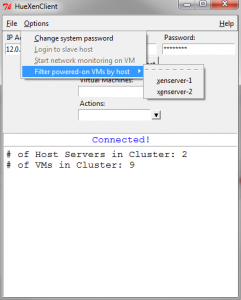
I created and uploaded this video to youtube back in 2009. This video demonstates how to solve a simple algebra coin problem. Continue reading
Algebra: Linear Equations (Coin Problem) [Video]
Chemistry: Calculate the Mass of an Atom [Video]

I created and uploaded this video to youtube back in 2009. This video demonstrates how to solve a simple chemistry problem. I calculate the mass of a Chlorine atom. Continue reading
Python – Implementing Caching in Your Applications via Dictionaries
 In this blog I demonstrate how you can implement and take advantage of caching in your Python scripts/applications.
In this blog I demonstrate how you can implement and take advantage of caching in your Python scripts/applications.
Caching allows you to complete tasks more rapidly by storing and reusing results for repeated operations using the same criteria. For example, consider a function that takes several arguments and performs a complex calculation. What if you passed the same arguments to this function ten times; well, without caching, the same operation and complex calculation will be performed ten times. Continue reading
EIGRP – Best Path Selection
By default EIGRP uses bandwidth and delay of the line to determine the best path to a remote network. However, if desired, EIGRP can use a composite of four metrics: bandwidth, delay, reliability, and load. Maximum transmission unit (MTU) is not used in EIGRP calculations but is a required parameter in some EIGRP-related commands. Also, by default, EIGRP will provide equal-cost load balancing across up to four links. You can disable load balancing by setting the ‘maximum-paths’ to ’1′. In this lab I use four Cisco 3725 routers [IOS 12.4(15)T10] to demonstrate EIGRP path selection behavior on Cisco routers. Continue reading
Setting-up Basic iBGP and eBGP on Cisco Routers
The Border Gateway Protocol (BGP) is a protocol used to make core routing decisions on the Internet. BGP is commonly mislabeled or referred to as an IP routing protocol. However, it is not a routing protocol; rather, it is a TCP application that carries routing information with it. It is better referred to as a reach-ability protocol rather than a routing protocol. Continue reading
Single/Dual and Multihomed Connections
Network engineers will sometimes speak of connections to their ISP(s) in terms of single homed, dual homed, single multihomed, and dual multihomed. Here is a breakdown and clarification of what this terminology means:
– Single Homed (1 link per ISP, 1 ISP)
– Dual Homed (2+ links per ISP, 1 ISP)
– Single Multihomed (1 link per ISP, 2+ ISPs)
– Dual Multihomed (2+ links per ISP, 2+ ISPs)
Expanding the Java vSphere Client Code Example (HueVIClient 2.0 – Connecting to VMware ESXi)
In a previous blog I demonstrated using the VMware VI (vSphere) Java API with VMware ESXi (see prior blog Using the VI Java API with VMware ESXi). I’ve decided to add to this code to provide further functionality and demonstrate the power of the API. In the prior blog I created a vSphere Client in Java from scratch to connect to VMware ESXi and perform basic management functions. This update adds on and improves the original foundation we have already built. Continue reading
Cloud Computing and the Pace of Technological Innovation
![]() Everyone knows for the most part that technology, especially in Silicon Valley, is a fast moving beast. Nowadays, it’s not a field for people to get into halfheartedly; otherwise, you may find yourself being eatin’ alive by the competition. It’s a land and time where geeks and hardcore tech junkies flourish and those seeking a 9 to 5 job die off. With the speed at which technology is moving, even I, a devout hardcore tech junky whose personal and work life have commingled to a point of no distinction, find it hard to keep up. Continue reading
Everyone knows for the most part that technology, especially in Silicon Valley, is a fast moving beast. Nowadays, it’s not a field for people to get into halfheartedly; otherwise, you may find yourself being eatin’ alive by the competition. It’s a land and time where geeks and hardcore tech junkies flourish and those seeking a 9 to 5 job die off. With the speed at which technology is moving, even I, a devout hardcore tech junky whose personal and work life have commingled to a point of no distinction, find it hard to keep up. Continue reading
The Commoditization of the Hypervisor
 It’s amazing; since the introduction of hardware based virtualization made possible with processor technology such as the Intel-VT and AMD-V (see prior blog The Power of Virtualization – a competitive edge), everyone and their mother is coming out with a hypervisor. Continue reading
It’s amazing; since the introduction of hardware based virtualization made possible with processor technology such as the Intel-VT and AMD-V (see prior blog The Power of Virtualization – a competitive edge), everyone and their mother is coming out with a hypervisor. Continue reading




 Twitter
Twitter LinkedIn
LinkedIn Youtube
Youtube RSS
RSS